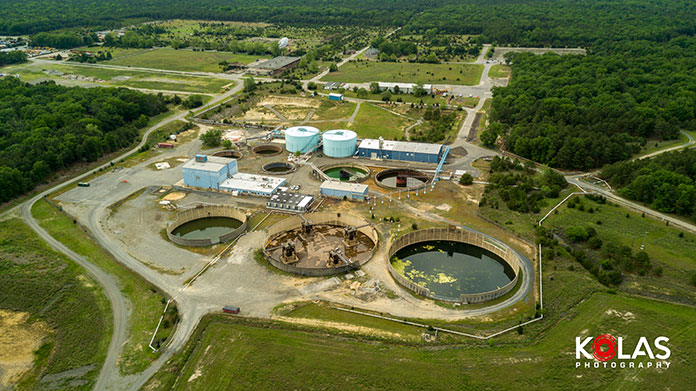
TOMS RIVER – On the heels of a settlement being signed in which the owner of the Ciba-Geigy property will still be able to profit from it, environmentalists are forming a strategy to again fight the chemical giant and the state agency that has “environmental protection” in its name.
Ciba-Geigy created dyes and other chemicals from 1952 until 1990. It also dumped unknown amounts of toxic waste into the soil and waterways. Many people believe that the area’s cancer cluster was caused by them.
The current property owners, BASF, and the State Department of Environmental Protection reached a settlement that would keep about 1,000 acres of it preserved for open space, pollinator gardens, trails, and an environmental recreation center.
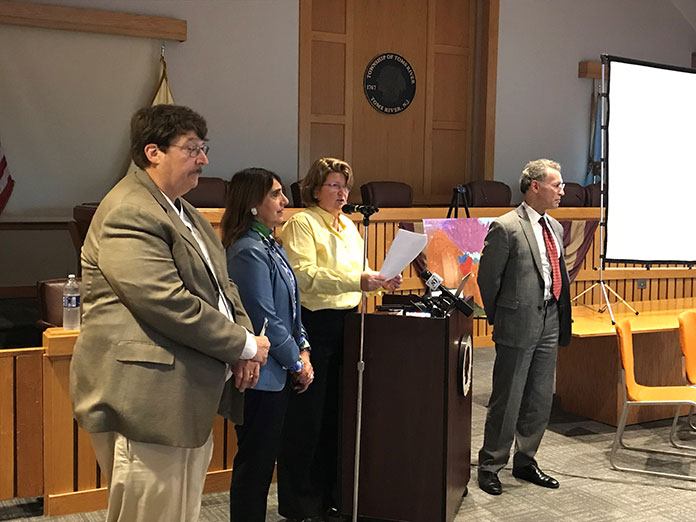
Locals are angry that 255 acres of the site would be allowed to be developed on Route 37 in an area currently zoned as light industrial. BASF will also be able to profit from a huge solar array.
Ciba became an Environmental Protection Agency Superfund Site in 1983. The settlement with the State DEP will not impact the situation with the federal EPA.
Save Barnegat Bay, a local environmental group, held a meeting to show the public how they will fight the settlement. They intend to show that the damages created by Ciba are far more than what the current property owners are being required to pay – preserving 1,000 acres and building passive recreation.
“Frankly, I’m really angry that a grassroots organization like this is fighting when it should be done by the State of New Jersey,” said Ed Mankowski, board chair of Save Barnegat Bay. “I’m sick and tired of the arrogance and dismissive attitude of a department that’s supposed to be protecting us.”
A short film they presented, made by Monmouth University students, showed locals criticizing the settlement, and Ciba’s influence over the years. It also showed how a member of the DEP said the settlement was too expensive to fight legally.
What Is BASF?
BASF is the largest chemical company in the world, founded in 1865. During World War II, it created the largest chemical factory at the time at Auschwitz. It used forced labor to create the chemicals used to exterminate people in concentration camps. They acquired Ciba in 2008.
Why would BASF purchase Ciba, which had been closed for almost 20 years? In 2008, Ciba was a financial drain since it was little more than a Superfund site losing millions of dollars associated with clean-up.
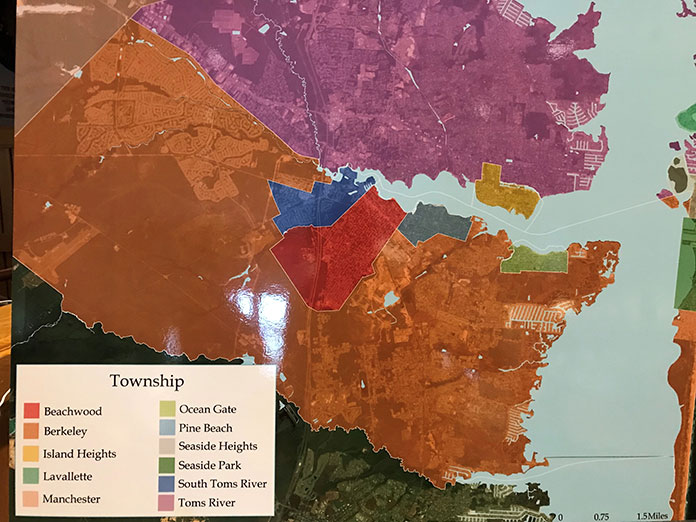
Save Barnegat Bay members said that corporations will buy companies that are losing money in order to make it look like they are taking a hit, and asking regulators to go easy on them.
“It’s about a corporation turning a liability into an asset,” said Britta Forsberg, Executive Director of Save Barnegat Bay.
More Than Just Toms River
Forsberg showed a map of the expansive reach of Ciba’s pollution. Most people know about the plume of waste in the ground, and the dumping in the water. However, it’s mostly been deemed a Toms River issue.
This is incorrect, she said. There’s reason to believe that it spread to surrounding towns as well, particularly the ones on the barrier island where waste washed up.
The meeting was attended by several elected officials from Toms River and beyond, showing their support for Save Barnegat Bay.
Toms River Mayor Maurice Hill said that the town was fighting Ciba to remove their drums for decades. The talks ended when BASF bought them.
“We’ve had very little communication there,” he said.
However, BASF sued the town in a tax appeal, winning $17 million, he said.
BASF said the land was worthless so they shouldn’t pay so much in taxes. If it’s worthless, then how come the company is profiting off of it, he asked.
They are looking to make a lot of money developing 250 acres, in addition to the $500,000 annually that they are anticipating from the solar fields, he said.

“All the NJ DEP has done is pour salt on the wounds,” he said.
He referred to the settlement as a “sweetheart deal for the largest chemical company in the world and once again, Ocean County residents get the shaft.”
Hill said that Toms River will be joining Save Barnegat Bay in their action against the settlement.
Berkeley residents might have also been affected, Berkeley Council President John Bacchione said.
“Whatever we can do, we’re here for you,” he said.
The Plan To Stop It
Forsberg presented three experts in the field to briefly explain their goals in stopping the settlement, but “they’re not going to put all the cards on the table because we’re likely on our way to court.”
Albert Telsey is an environmental lawyer who successfully prosecuted Ciba in 1986. He has also taken on DuPont and the DEP.
“The DEP, in my opinion, is monetizing environmental non-compliance,” he said.
Toms River has created an ordinance blocking conservation easements in industrial areas, he said. In oversimplified terms, it means that BASF can’t do what it wants to do on the 1,000 acres because of local law.
Additionally, BASF’s claim that the pollution happened from a previous company – Ciba – is sketchy since these corporations buy and sell divisions of each other in order to leverage power and keep themselves from being held accountable, he said.
The settlement has a value, said Frances Schlosstein, President and CEO of TBLS, a valuations consulting firm.
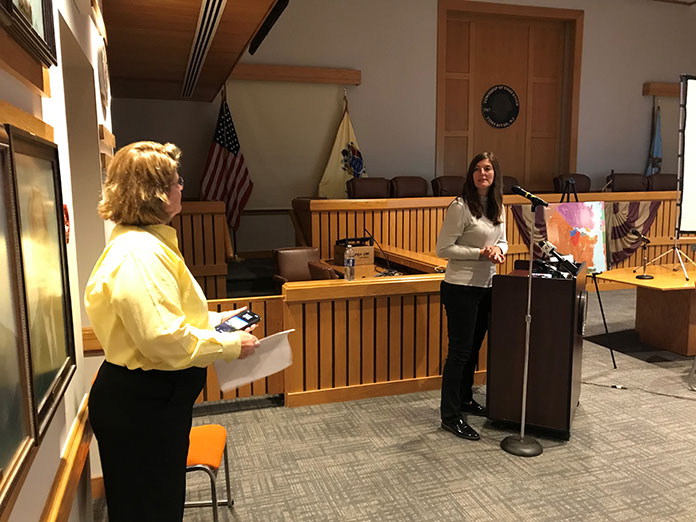
The environmental damages made by Ciba has a price, she explained. The price BASF is paying in the settlement is “diminutive by orders of multitude.” This means that the company owes Toms River and surrounding towns much more than they are offering.
Damaged resources, she said, stops you from having what is yours.
Jeffrey Andrilenas, TBLS Group Environmental Advisory Services Lead, said that the DEP started doing cost assessments back around 2007 or so. The way to come up with a figure was sometimes anecdotal: the fishing is starting to come back; there used to be river otters.
The DEP focuses on contamination on the site itself, but they haven’t been studying the impacts on the surrounding towns, he noted.
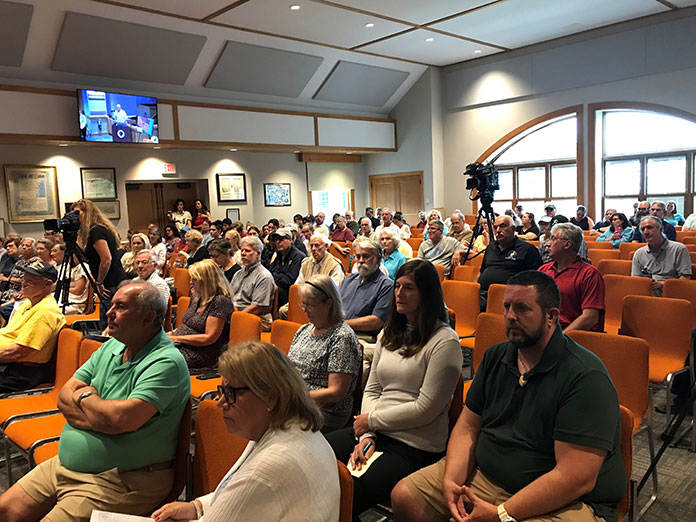
How To Help
SaveBarnegatBay.org has ways to get involved and links to donate to fund the legal fight. Updates can be found on their Facebook page.
Science teacher Christine Girtain will be having her high school students give questionnaires to the public about how the environment has changed during the years that Ciba was active. Information about this will be forthcoming.






